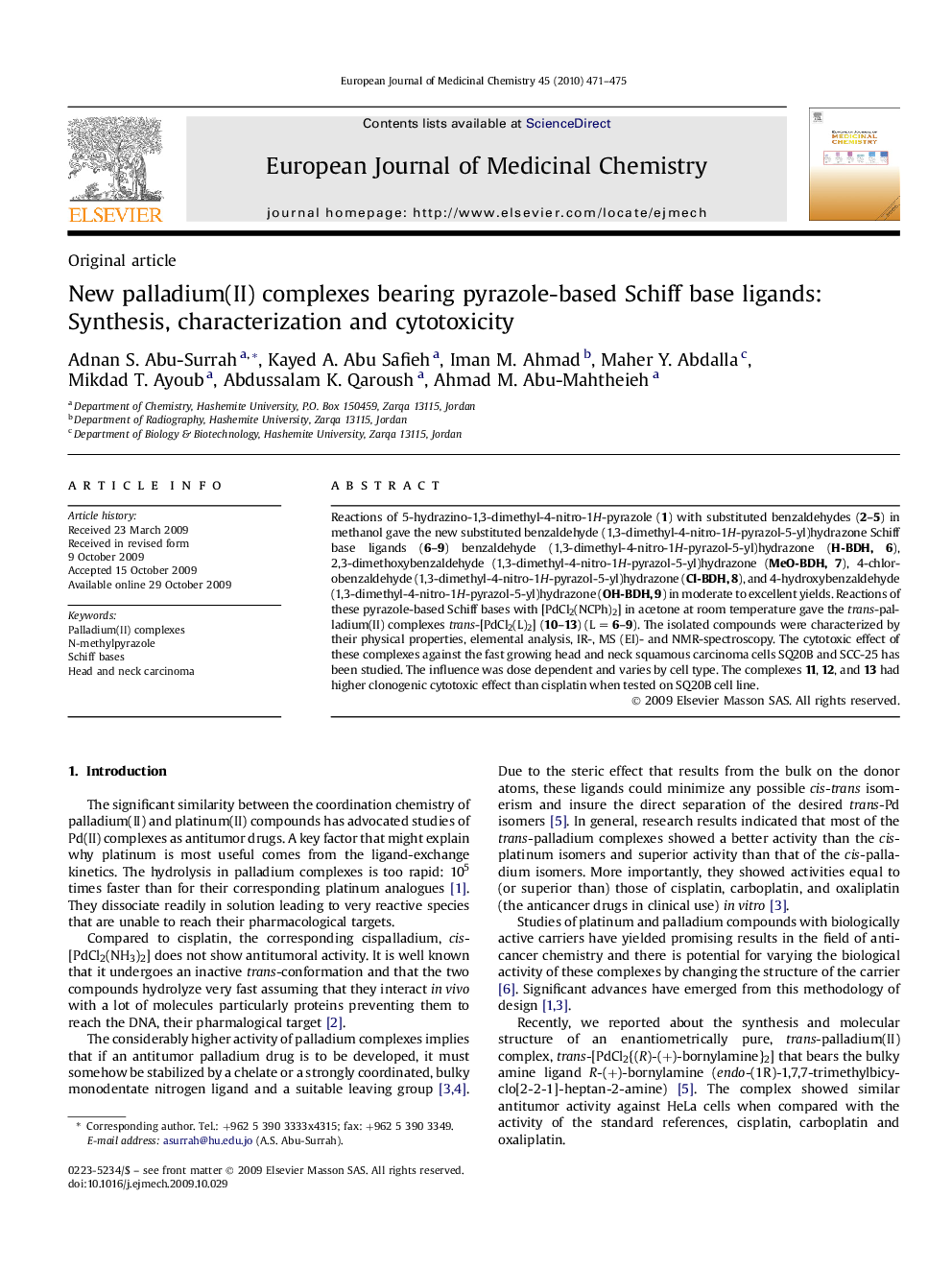| Article ID | Journal | Published Year | Pages | File Type |
|---|---|---|---|---|
| 1394974 | European Journal of Medicinal Chemistry | 2010 | 5 Pages |
Reactions of 5-hydrazino-1,3-dimethyl-4-nitro-1H-pyrazole (1) with substituted benzaldehydes (2–5) in methanol gave the new substituted benzaldehyde (1,3-dimethyl-4-nitro-1H-pyrazol-5-yl)hydrazone Schiff base ligands (6–9) benzaldehyde (1,3-dimethyl-4-nitro-1H-pyrazol-5-yl)hydrazone (H-BDH, 6), 2,3-dimethoxybenzaldehyde (1,3-dimethyl-4-nitro-1H-pyrazol-5-yl)hydrazone (MeO-BDH, 7), 4-chlorobenzaldehyde (1,3-dimethyl-4-nitro-1H-pyrazol-5-yl)hydrazone (Cl-BDH, 8), and 4-hydroxybenzaldehyde (1,3-dimethyl-4-nitro-1H-pyrazol-5-yl)hydrazone (OH-BDH, 9) in moderate to excellent yields. Reactions of these pyrazole-based Schiff bases with [PdCl2(NCPh)2] in acetone at room temperature gave the trans-palladium(II) complexes trans-[PdCl2(L)2] (10–13) (L = 6–9). The isolated compounds were characterized by their physical properties, elemental analysis, IR-, MS (EI)- and NMR-spectroscopy. The cytotoxic effect of these complexes against the fast growing head and neck squamous carcinoma cells SQ20B and SCC-25 has been studied. The influence was dose dependent and varies by cell type. The complexes 11, 12, and 13 had higher clonogenic cytotoxic effect than cisplatin when tested on SQ20B cell line.
Graphical abstractNew pyrazol hydrazone-based palladium(II) complexes have been prepared, characterized and evaluated against the fast growing head and neck squamous carcinoma cells SQ20B and SCC-25. The influence of these complexes was dose dependent and varies by cell type. The complexes had higher clonogenic cytotoxic effect than cisplatin when tested on SQ20B cell line. Figure optionsDownload full-size imageDownload as PowerPoint slide
